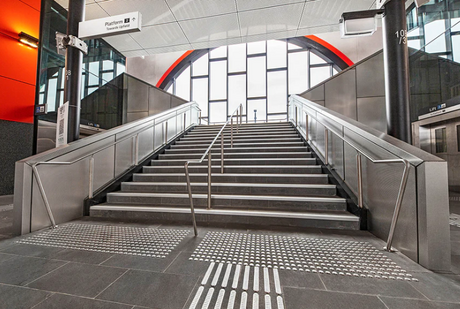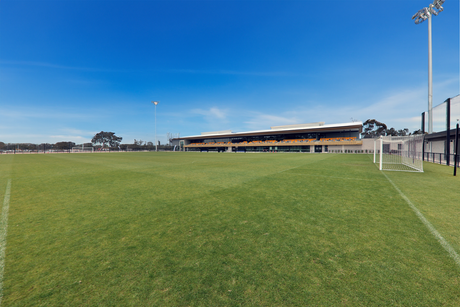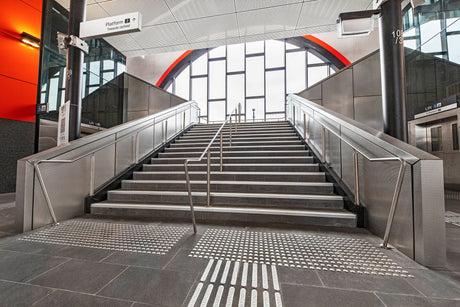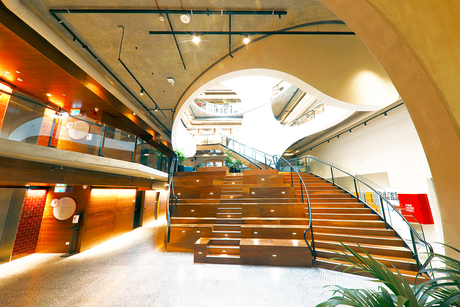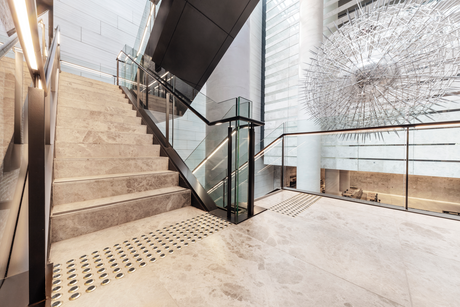Imagine a world bathed in darkness, where navigating familiar spaces becomes a constant exercise in spatial awareness. This is the daily reality for many blind and vision-impaired individuals. Fortunately, a network of silent guides exists, woven into the very fabric of our public spaces: tactile indicators. These unassuming textured surfaces play a crucial role in empowering people with visual impairments to move safely and confidently through their environment.
But how exactly do blind people use these tactile indicators? Let's delve deeper into this ingenious system and explore the ways it transforms everyday navigation.
The Power of Touch: A Sensory Substitute
For those with limited or no vision, touch becomes the primary sense for gathering information about their surroundings. Tactile indicators provide a crucial sensory substitute, offering invaluable cues that translate into a comprehensive understanding of the layout and potential hazards within a space.
The use of a cane becomes an extension of this sensory exploration. As a blind person traverses a surface, the cane taps rhythmically, detecting changes in texture and elevation. Tactile indicators translate into distinct vibrations or feelings through the cane, conveying critical information that would otherwise be unavailable.
Decoding the Tactile Language: A Matter of Pattern Recognition
Tactile indicators are not random bumps on the ground. They are part of a carefully designed language, with specific patterns and textures conveying distinct messages. By understanding these patterns, blind people can interpret their surroundings and make informed decisions about their movement.
- Directional Indicators: These linear patterns, often consisting of parallel lines or elongated rectangles, guide pedestrians along a safe path. Imagine feeling a series of raised bars underfoot in a hallway. This indicates a clear pathway, likely leading towards an exit, elevator, or another destination.
- Warning Indicators: These textured surfaces, featuring raised domes, truncated pyramids, or other distinct patterns, signal potential hazards. The change in texture underfoot serves as an immediate alert, prompting a blind person to slow down, change direction, or prepare for an upcoming obstacle like stairs or a change in elevation.
Beyond the Basics: A System of Information
The true power of tactile indicators lies in their ability to create a comprehensive information system. Imagine navigating a busy train station. Directional indicators might guide a person towards the platform, while warning indicators alert them to the edge of the platform itself.
This interconnected network of tactile cues paints a clear picture of the environment, allowing blind people to not only move safely but also plan their movements strategically. For example, the presence of warning indicators followed by a change in directional texture might signal an upcoming staircase, allowing the person to prepare accordingly.
Training and Familiarity: Refining the Skill
While tactile indicators offer a powerful tool, maximizing their effectiveness requires some practice. Many blind people receive training in cane use and tactile interpretation as part of their orientation and mobility skills program. This training helps them develop the sensitivity and awareness necessary to decode the subtle variations in texture and pattern.
Additionally, familiarity plays a significant role. The more a person encounters and interacts with tactile indicators in different settings, the more adept they become at interpreting the information they provide. Imagine navigating a familiar building versus a completely new environment. In the familiar space, the established network of tactile cues becomes intuitive, promoting a smoother and more confident navigation experience.
The Future of Tactile Navigation: Innovation and Collaboration
The world of tactile indicators is constantly evolving. New materials and design techniques are being explored to create even clearer and more detectable textures. Additionally, research is underway to integrate technology with tactile indicators, potentially allowing for voice prompts or audio information to supplement the touch experience.
Collaboration between accessibility advocates, designers, and blind individuals is crucial in shaping the future of tactile navigation. By working together, we can ensure that these silent guides continue to empower safe, independent movement for all.
In conclusion, tactile indicators are much more than just bumps on the ground. They are a powerful language, empowering blind people to navigate their surroundings with confidence and independence. Through touch and interpretation, they unlock a world of information, transforming everyday spaces into accessible and inclusive environments. As we continue to innovate and collaborate, the future of tactile navigation promises to be even brighter, fostering a more inclusive and accessible world for everyone.


